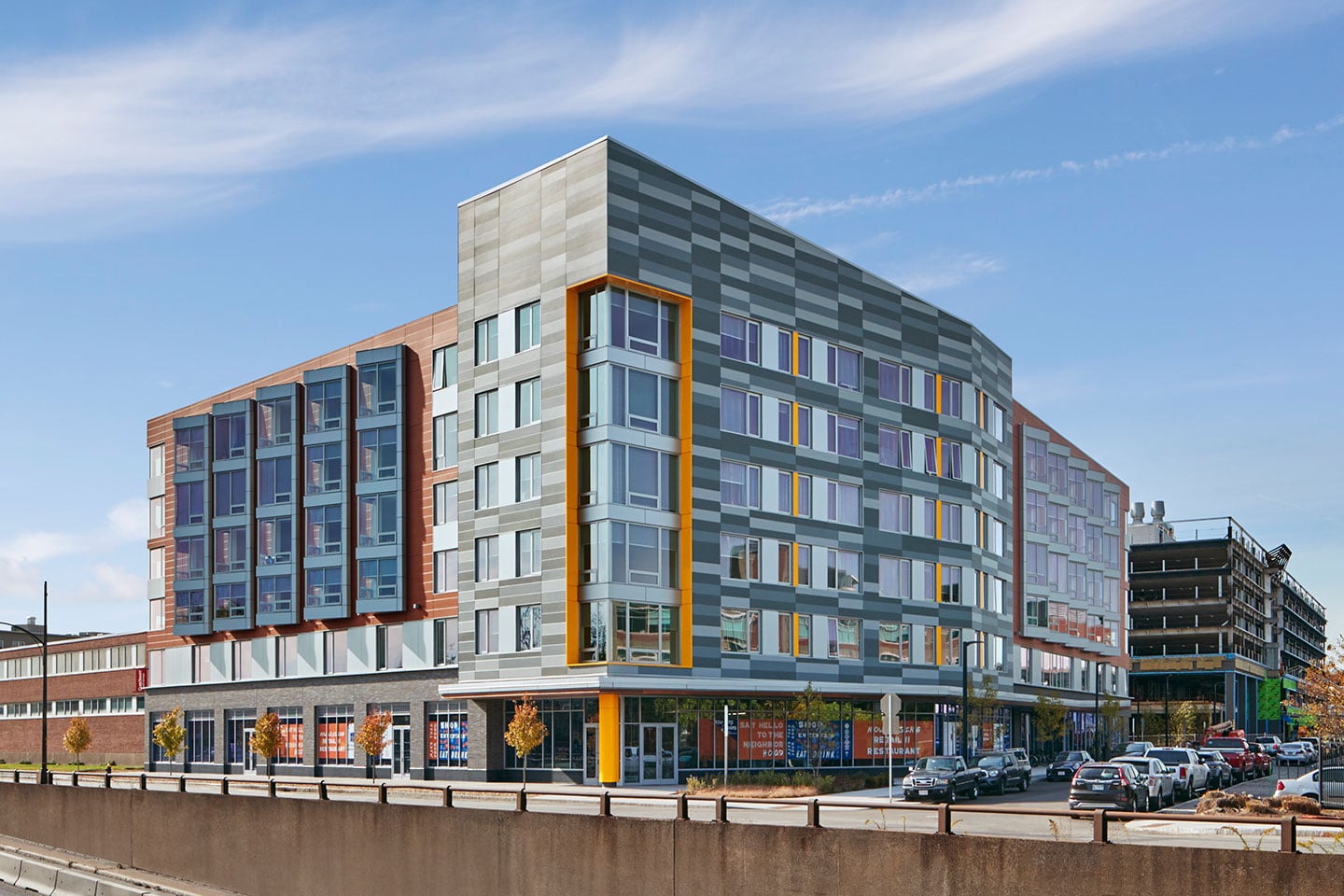Story at a glance:
- Multifamily design is a subclass of residential development and includes everything from condominiums and townhouses to apartment complexes and communities.
- Current trends in multifamily design include diverse housing options, improved energy efficiency, inclusion of property technology and security features, increased walkability, and access to both communal spaces and remote work spaces.
- The Edwin M. Lee Apartments housing project in San Francisco is an inspiring example of successful affordable multifamily design in action.
Housing is one of the most important categories of development there is—one that has far-reaching impacts on the health of a society as a whole. And while it’s true that single-family homes dominate the US housing market by a significant margin, multifamily properties play a significant a role in the creation and establishment of thriving, livable communities.
Like any real estate, multifamily design is not static but evolves to better suit the wants, needs, and aesthetics of the current market. Architects and multifamily property developers must be aware of these trends to better design spaces that will attract and retain tenants for the long term.
In this article we delve into the basics of multifamily development, explore some of the current trends influencing multifamily design, and take a look at a few project examples from around the world.
What is Multifamily Design?
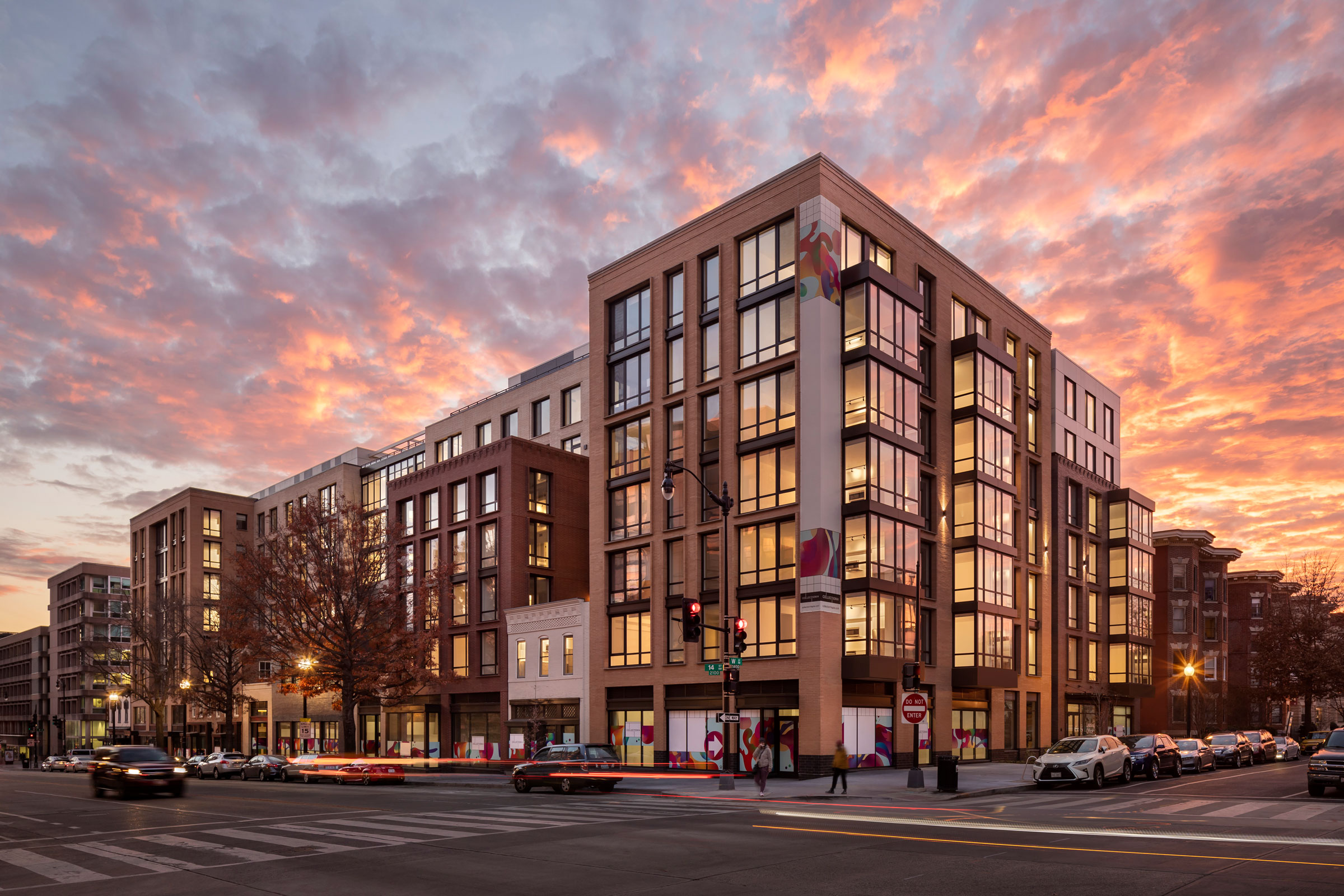
Multifamily design is a category of residential design that includes everything from condominiums and townhouses to apartment buildings and apartment communities. Photo by Andrew Rugge
Multifamily design or multifamily residential development is a sub-classification of housing wherein multiple separate housing units for residential inhabitants are contained within the same building or in several buildings within one complex. These units may be arranged side-by-side or stacked on top of one another, with most multifamily development projects incorporating a mixture of the two layouts.
A variety of multifamily development types can be found in the US, with the most common being apartment buildings, apartment communities, condominiums, and townhouses or row-houses. Most multifamily residential complexes are either owned by a single entity that rents individual units to separate tenants or each unit may be owned by separate parties who share co-ownership of any and all common areas.
Why is Multifamily Design Important?
Multifamily design is important for a number of reasons, with the most significant being that it provides housing opportunities to those who cannot afford, or prefer not to own, a private residence.
From a sustainability standpoint, multifamily development makes much more efficient use of land and infrastructure than single-family development, drastically increasing the density of households on any given parcel of land. This denser housing in turn makes it easier to preserve open spaces and natural amenities while also requiring less energy to operate on a per-unit basis compared to single-family residences. The increased density that comes with multifamily development is also important economically, as it quickly expands the tax base of an area and helps stimulate local economies, encouraging economic growth and increasing employment opportunities.
Finally, equitable multifamily development can be key to fostering and maintaining strong communities by providing a more conducive environment for interacting and collaborating with one’s neighbors.
Multifamily Design Ideas & Trends
Like any other architectural category, multifamily design evolves and changes over time to address the wants, needs, and aesthetic preferences of the current market. Here are some of the current ideas and trends informing multifamily design in our contemporary world.
Mixed & Affordable Housing Options
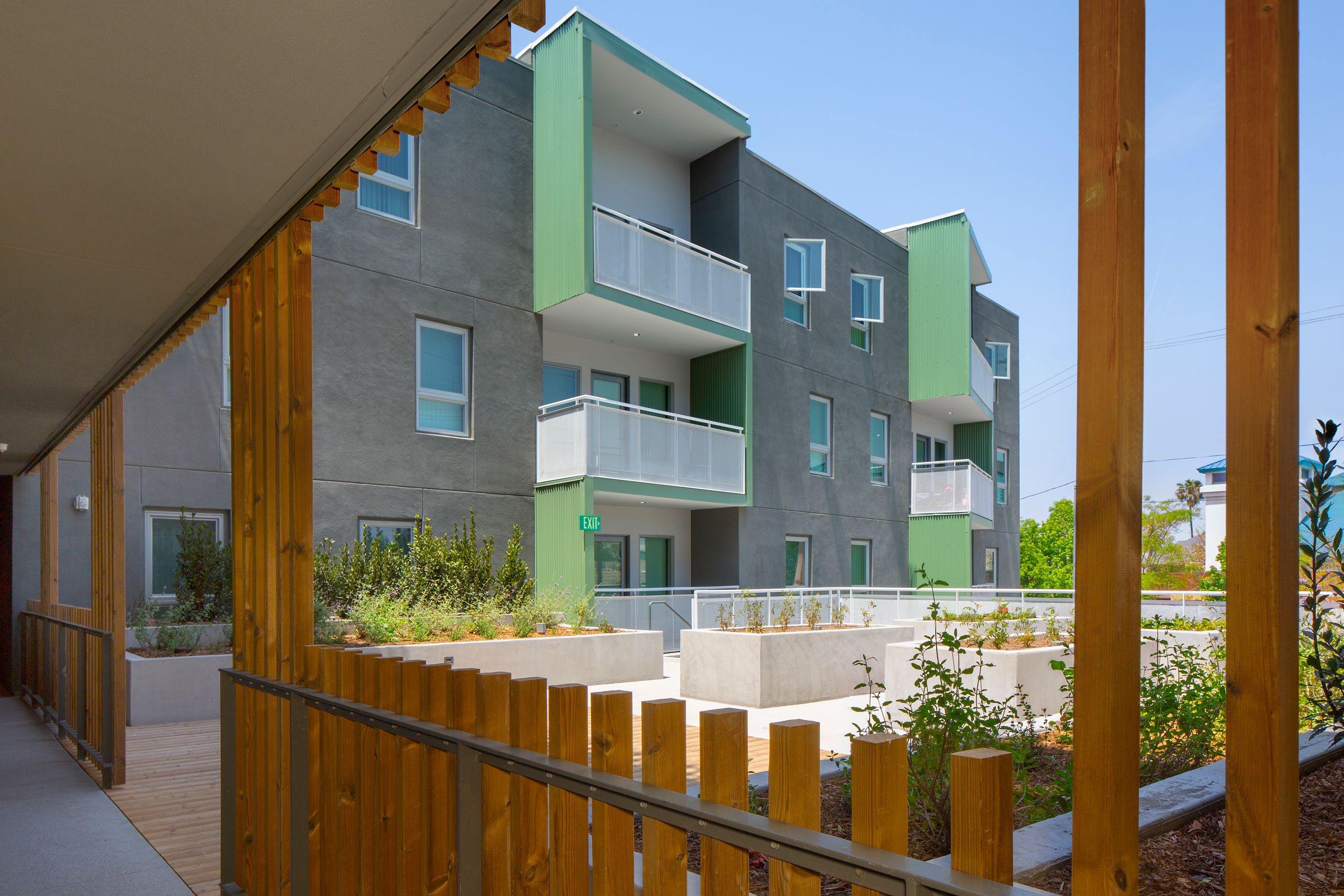
Florence Mills Apartments is an affordable multifamily residential project in Los Angeles that is specifically designed for low-income households. Photo by Jeff Simmons Photography
With a large percentage of the population forced into renting as a result of rapid house price increases and a runup in mortgage rates, it is crucial that multifamily development projects offer a mix of affordable housing options alongside mixed-rate units. This is exemplified to the extreme by Florence Mills Apartments, a multifamily residential complex in Los Angeles with units priced to accommodate families at low, very low, and extremely low income levels.
New multifamily construction can also work to provide missing middle housing, or medium-density housing that exists between detached single-family homes and large apartment complexes. Missing middle housing encompasses a range of housing types—including townhouses, duplexes, triplexes, multiplexes, bungalow courts, courtyard apartments, etcetera—and diversifies the housing options available to households of different sizes, ages, and income levels. Missing middle multifamily construction also goes hand-in-hand with the creation of walkable streetscapes and neighborhoods.
Adaptive Reuse
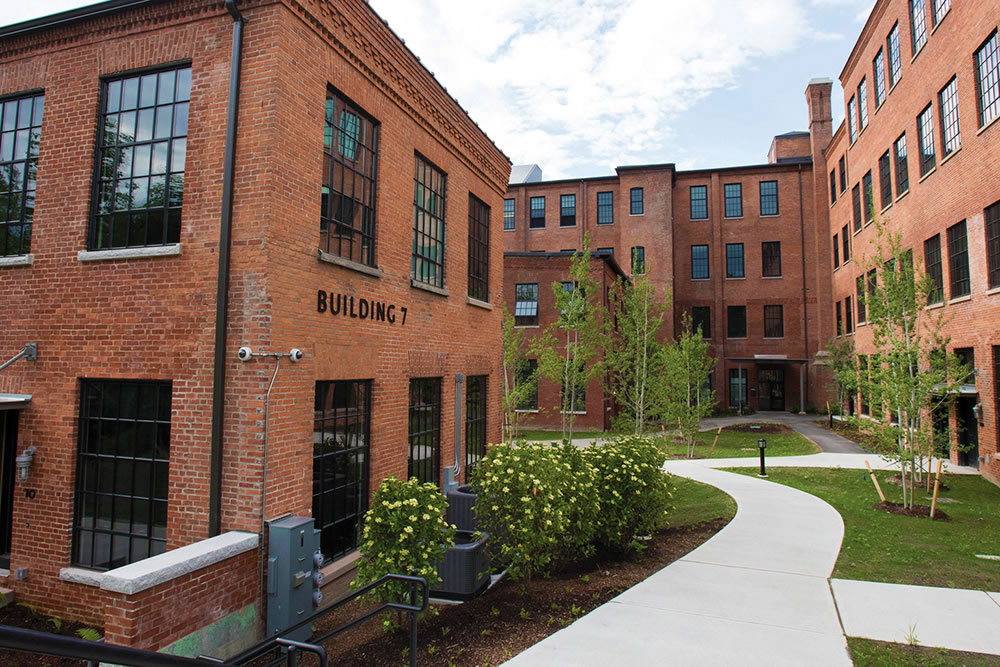
Cable Mills Apartments marries multifamily design and adaptive reuse by repurposing eight industrial buildings originally built in the 1800s into affordable and mixed-rate housing. Photo courtesy of Cable Mills
Another trend in multifamily design is adaptive reuse, or the renovation of buildings not originally intended for residential use into apartment complexes and the like. Repurposing existing buildings is often cheaper than building from the ground-up and produces less waste than new construction, reducing a project’s overall environmental impact and carbon footprint. Adaptive reuse also helps preserve the historic fabric of an area and is a tried-and-true strategy for revitalizing post-industrial cities without contributing to further urban sprawl.
Cable Mills Apartments, for example, is a multifamily residential complex in Williamstown, Massachusetts that occupies several buildings originally constructed in the late 1800s as part of the Water Street Mill. Over the course of the 2000s and 2010s, Finegold Alexander Architects renovated eight of the buildings to create the Cable Mills Apartments complex, which now houses 61-units—13 of which are designated as affordable—and supports a vibrant residential community.
Mixed-Use Planning
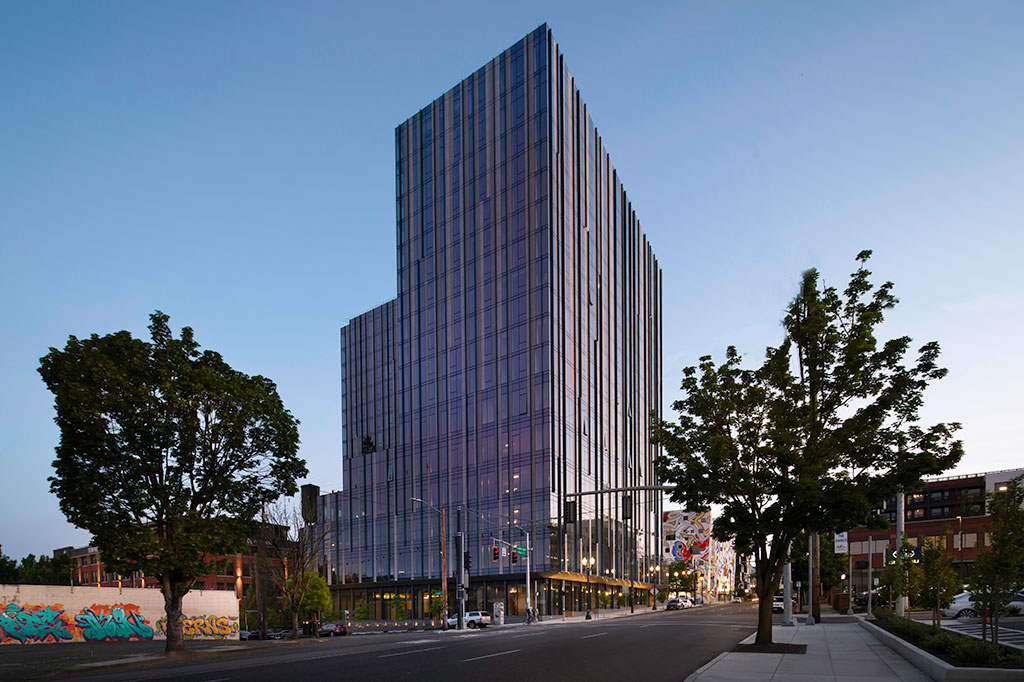
The mixed-use 5 SE MLK Boulevard in Portland has offices on its lower levels and residential spaces on the top floors. Photo by Quanta Collectiv
It is becoming increasingly common for multifamily development projects in dense urban areas to incorporate mixed-use planning in their design—that is, they include residential spaces as well as offices, retail, restaurants, or other commercial spaces within the same building. Mixed-use multifamily design typically locates these non-residential spaces at the lower levels while the residential units occupy the upper floors, a layout that makes stores and restaurants accessible to the public without jeopardizing tenant safety and security.
Incorporating mixed-use planning in multifamily design can be extremely beneficial to tenants in that it provides convenient proximity to shops and potential employment avenues that may be accessed without a vehicle. This in turn helps encourage walkability, reduce traffic, and mitigate urban sprawl. Mixed-use multifamily developments also tend to be more profitable than their single-use counterparts because they are capable of generating multiple streams of income and help stimulate the local economy.
Improved Energy Efficiency
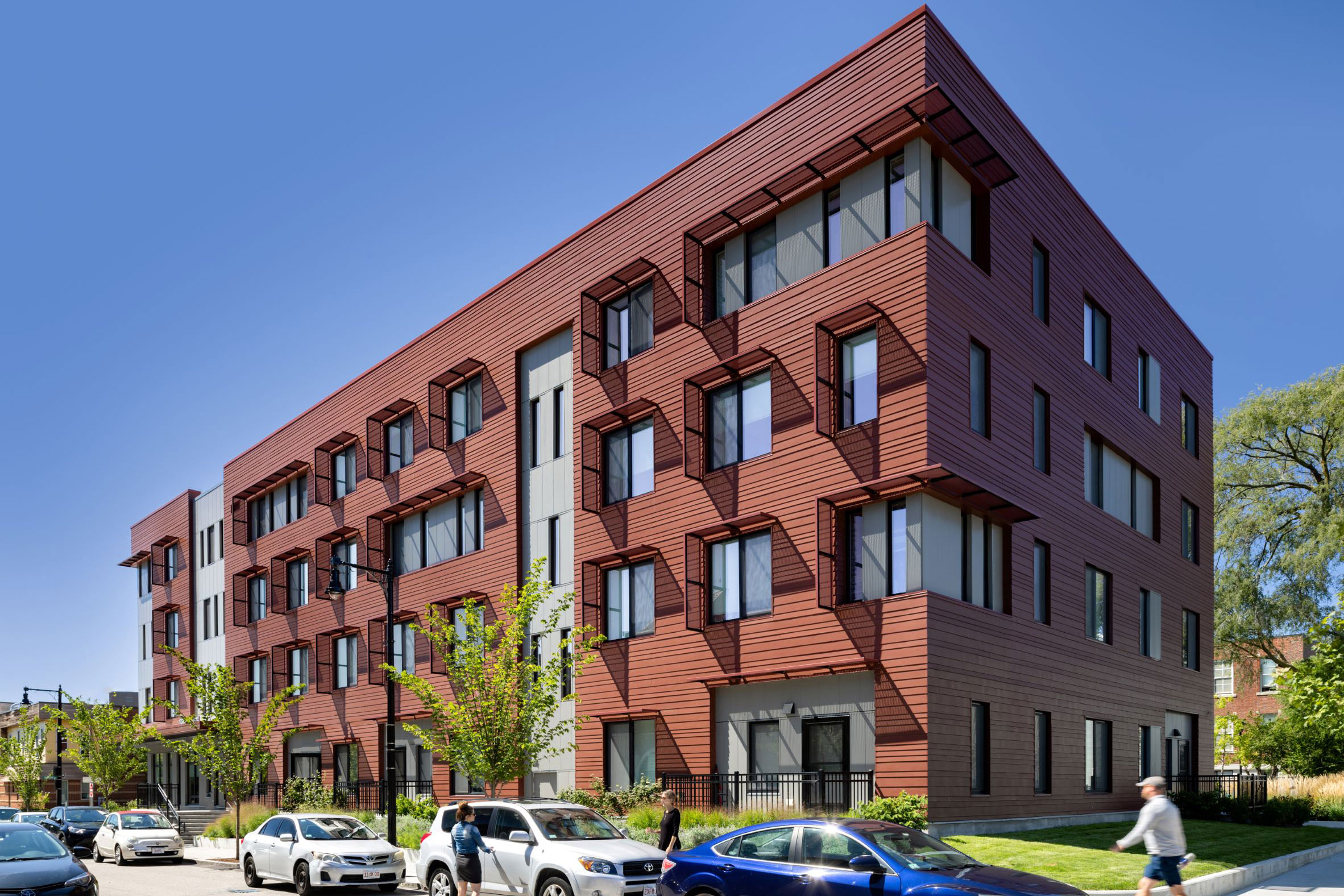
Designed by The Architectural Team (TAT) to meet Passive House standards, the Old Colony Phase low-rise multifamily residential project features heavily-insulated walls and passive solar design strategies to reduce its energy consumption. Photo courtesy of PHIUS
A prevailing trend in multifamily design—and most new construction, for that matter—is improved energy efficiency. Indeed, reducing energy consumption in the built environment is considered crucial to stopping and reversing climate change, as the real estate sector currently accounts for roughly 40% of all GHG emissions.
Multifamily development projects can work to reduce their energy consumption by installing energy-efficient appliances in each unit, investing in motion-activated LED lighting for communal areas, and installing high-efficiency HVAC systems.
In addition to energy-efficient systems and appliances, multifamily development projects can reduce their energy use requirements through the construction of airtight, well-insulated building envelopes that employ continuous insulation, eliminate thermal bridging, and make use of energy-efficient windows.
Daylighting & Solar Shading

YKK AP can help bring high-performance daylighting and solar shading solutions to multifamily design projects. Photo courtesy of YKK AP
With the average American spending 90% of their time indoors and a record number of people working from home, adequate admittance of natural sunlight in multifamily design has never been more important than it is right now. Daylighting, or the practice of using windows, skylights, and other light-admitting features to illuminate a building’s interior, can help provide that much-needed sunlight while also improving the tenant experience and overall building performance.
“The benefits of additional daylighting in multifamily buildings are vast, including a healthier, more productive, and energy-efficient environment, improved occupant comfort, and the ability for architects and building owners to better meet certifications like LEED and WELL,” Steve Schohan, marketing and communications manager at YKK AP America, previously wrote for gb&dPRO. A leading manufacturer of commercial and residential fenestration solutions, YKK AP offers a range of products, including high-performance windows, doors, curtain and window walls, and sun control systems.
You have to know how to use that light, though, which is why it’s important for multifamily design to incorporate effective solar shading strategies, like sunshades, alongside daylighting solutions. “When designing for multifamily buildings, sunshades are a critical factor in improving occupant comfort, enhancing energy efficiency, and reducing the solar heat gain coefficient (SHGC),” writes Schohan. “Sunshades offer design versatility and can often be customized depending on which way a building faces to reduce harmful light while bringing visible light in to achieve optimal daylighting.”
Property Technology & Security Features
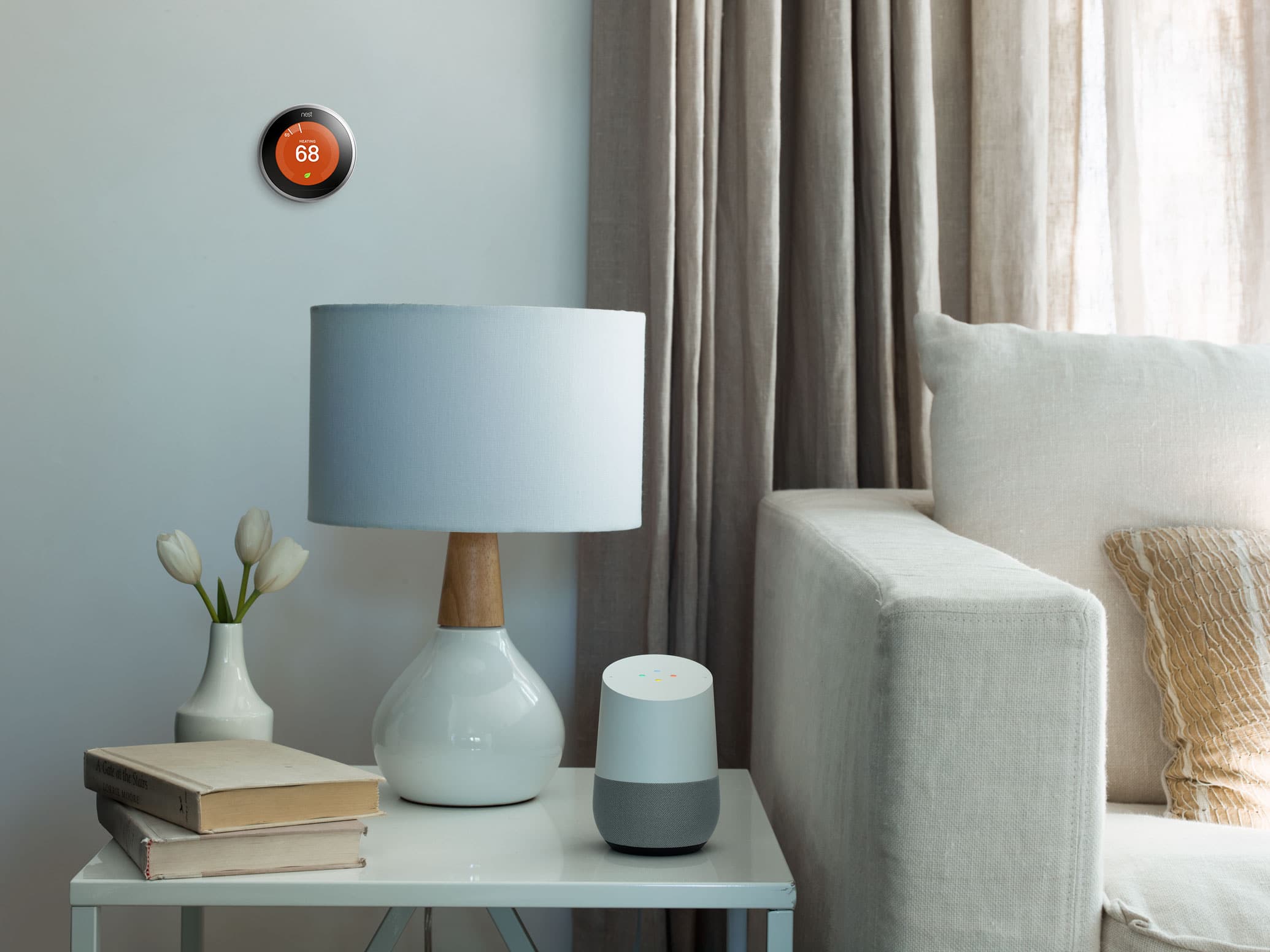
Smart thermostats, keyless entry systems, video doorbells, and other examples of property technology are attractive amenities for multifamily development projects. Photo courtesy of Nest
A recent report by Allegion entitled “2023 Multifamily Living Trends: A Study on What Multifamily Renters Desire, Expect, and Will Pay More For in Their Residences” found that 82% of all survey respondents identified smart property technology as a must- or nice-to-have feature. Smart property technology allows tenants to control certain systems via their smartphone and includes everything from smart locks and video doorbells to smart thermostats and lockers, all integrated through a streamlined resident portal app.
Property technology can also benefit building managers and property owners by improving energy efficiency and security. Multifamily development projects that implement smart lighting solutions in communal areas, for example, reduce their artificial lighting use by ensuring lights only turn on when absolutely necessary, such as when a person enters or the sun begins to set. Keyless entry systems, on the other hand, ensure only those with a card, key fob, or smartphone authentication are able to enter the building, units, and shared amenity spaces, offering greater security to tenants and building personnel.
Effective Package Management
According to Allegion’s 2023 Multifamily Living Trends report, 50% of all respondents currently use restaurant delivery services, 44% order non-perishable food/non-food items online, and 42% regularly make use of grocery delivery services. With more and more people making use of food, grocery, and other online delivery services in the wake of the pandemic, it’s become even more apparent that effective, secure package management is a valuable quality in any new multifamily development project.
Adding smart insulated/refrigerated lockers, for example, allows food and grocery delivery couriers to deliver residents’ goods to the building’s mailroom, after which point a push notification will be sent to the tenant’s smartphone alerting them for pickup. Residents then enter a code on the locker to retrieve their items. Dedicated lockers and other secure package holding systems are convenient and drastically reduce the chances of residents’ deliveries being stolen.
High Degree of Walkability
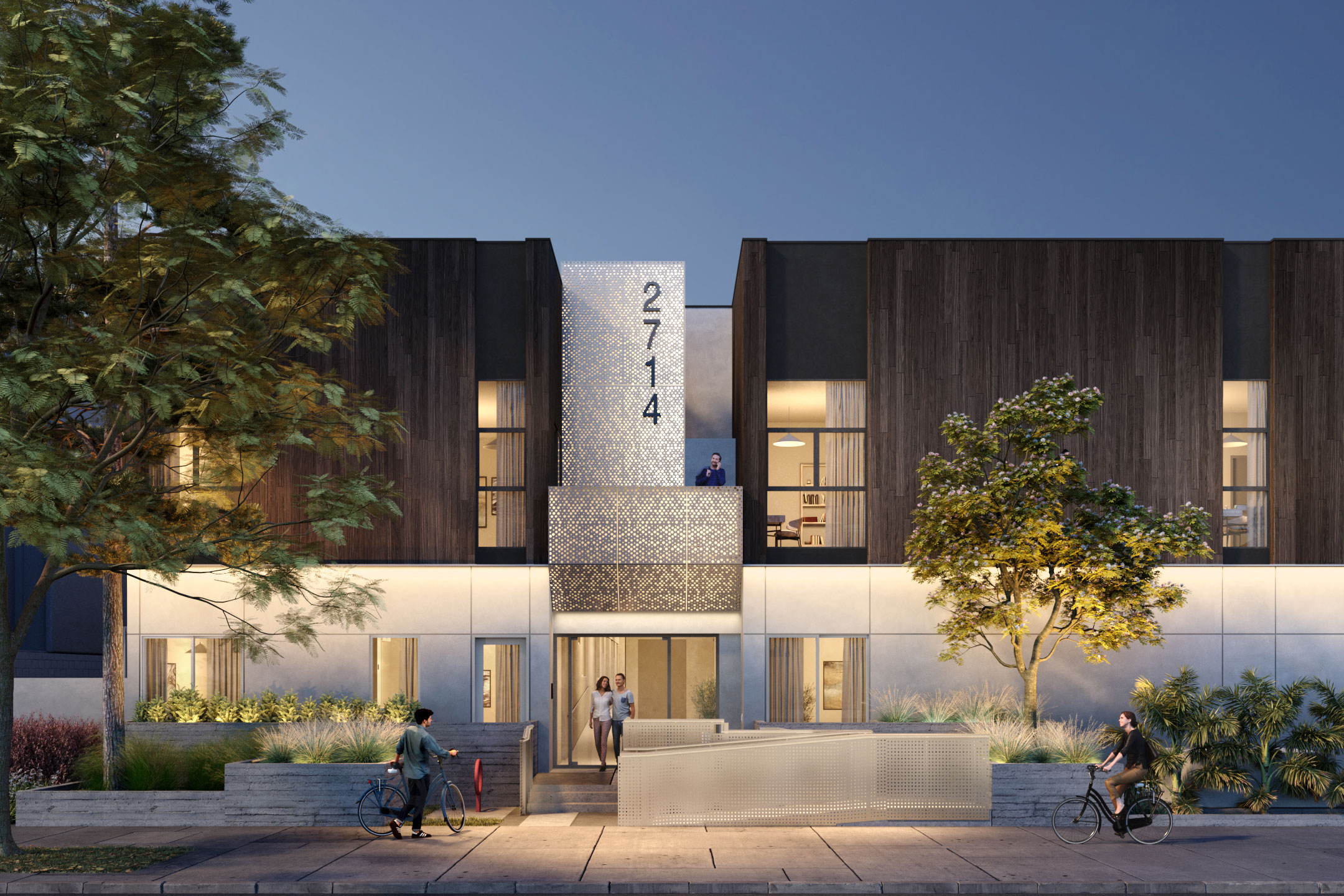
JZA Architecture says dense, walkable projects like the Beta Apartments aim to ease the affordability crunch in cities across the US. Rendering courtesy of JZA Architecture
Walkability—or the ability to access retail stores, grocery stores, restaurants, and other everyday necessities on foot—is in high demand amongst renters and prospective homeowners alike. In fact, approximately 85% of Americans consider sidewalks and places to walk as being “very/somewhat” important attributes when choosing a place to live, according to the National Association of Realtors’ 2023 Community & Transportation Preferences Survey.
And it’s not hard to see why. “A walkable street ensures people can safely zigzag to visit multiple shops and see more local businesses that might otherwise be missed if riding in a fast vehicle,” Renee Schoonbeek, senior consultant stations and urban development at Arcadis, previously wrote for gb&d. “Simultaneously, these walkable communities foster a stronger urban fabric and sense of community as one’s neighbors, nearby relatives, and friends are likely to be there as well.”
Walkability also helps tenants save money by reducing their dependency on personal vehicles to get around and improves the overall health and safety of communities by reducing the amount of vehicles on the road.
Proximity to Public Transit
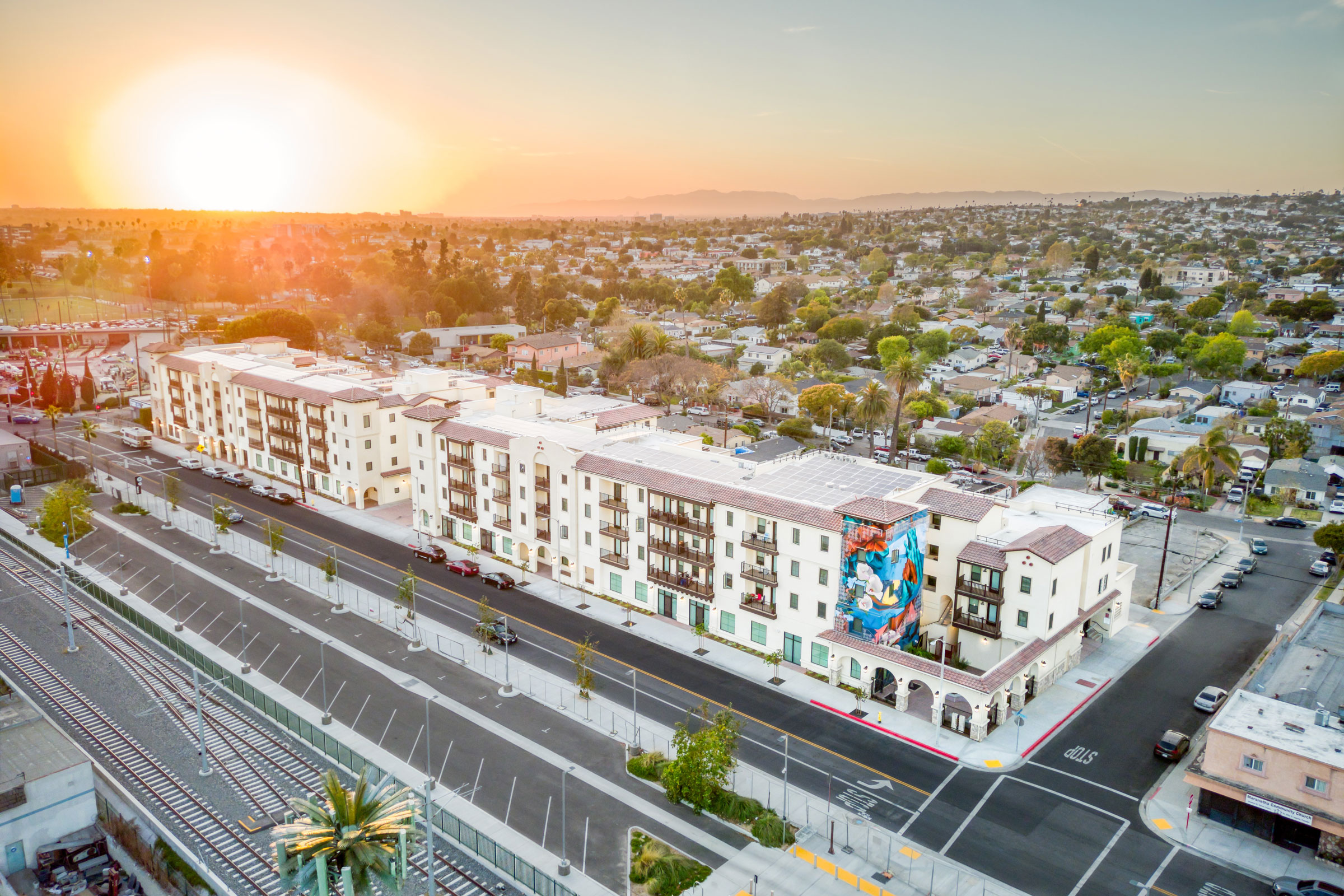
Designed by KFA, the Fairview Heights multifamily development in Inglewood, California is located just across the street from an LA Metro stop. Photo by ArchLenz Photography
In conjunction with walkability, multifamily development projects are increasingly being designed to provide tenants with improved access to public transportation. Fairview Heights—a 101-unit multifamily development in Inglewood, California—for example, is intentionally located across the street from a stop on the LA Metro’s Crenshaw/LAX Metro Transit Corridor so as to make it easier for tenants to move around the city without needing a personal vehicle.
Increased access and proximity to public transit options is not only convenient but also helps improve air quality and reduces traffic congestion, which in turn makes neighborhoods safer and healthier to live in.
Communal Spaces & Shared Amenities
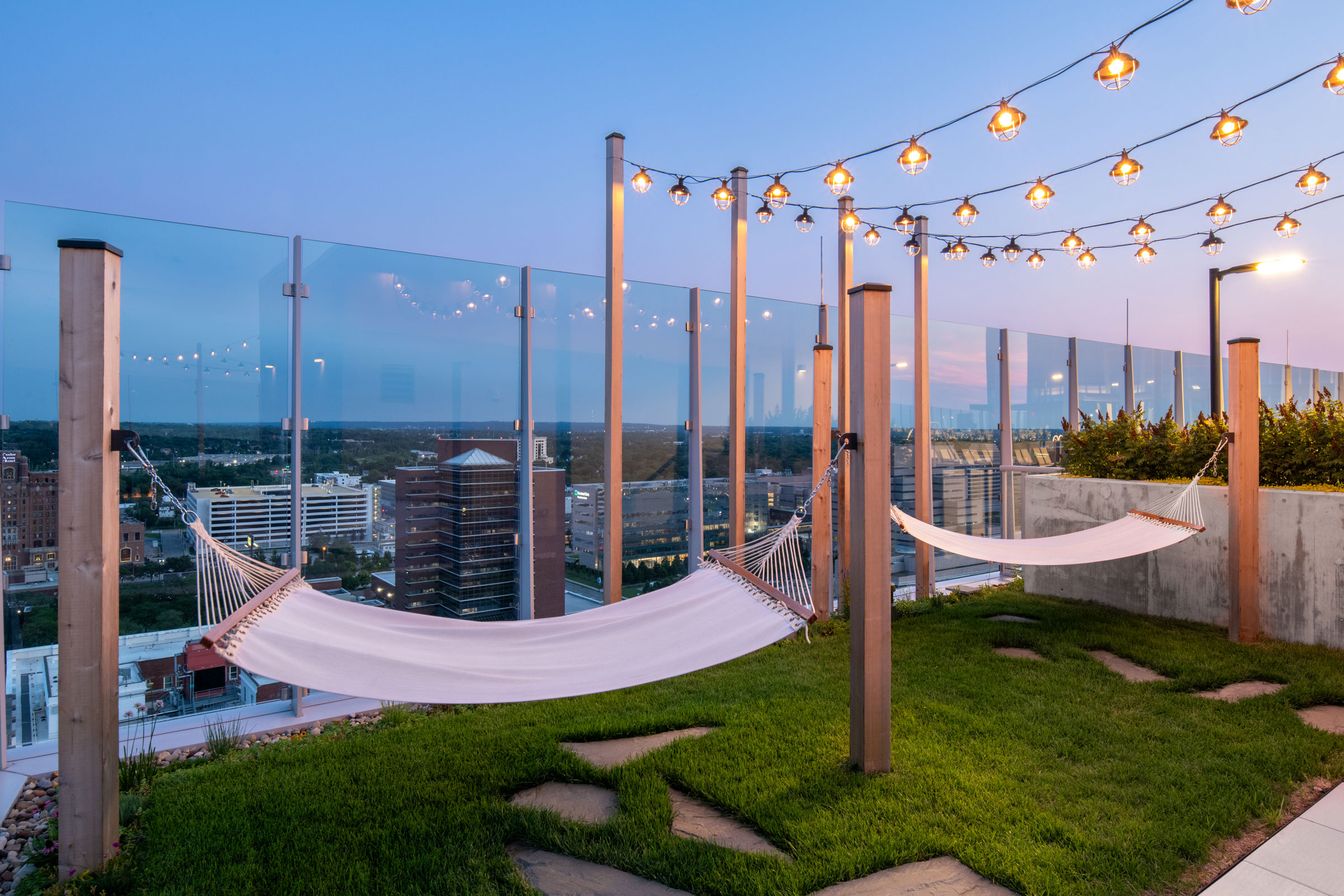
FitzGerald designed the Artisan multifamily building in Cleveland to meet sustainability goals while emphasizing communal spaces and shared amenities for residents. Photo by Salvi Media
If the SARS-CoV-2 pandemic has shown us anything, it’s that community is extremely important and shouldn’t be taken for granted. In order to avoid isolating tenants, multifamily development projects need to intentionally make room for community in their designs—and there’s no better way than through the inclusion of communal spaces and shared amenities that encourage interaction between residents.
The Artisan—a luxury high-rise apartment complex in Cleveland, Ohio designed by FitzGerald Associates Architects—for example, features a wide array of communal amenities including a full-service coffee bar, gym, yoga studio, rooftop terrace, lounge, party room, and on-site dog park, as well as regular events in their Chautauqua Garden. By providing these spaces for residents to socialize and interact with one another, multifamily development projects serve not just as residential complexes but also help foster strong communities and stimulate local economic growth.
Private & Remote Work Areas
Communal spaces are integral to any modern multifamily development project, but in an age where more and more people are working from home, it’s equally important for multifamily buildings to include spaces for remote workers as well. Placing small offices inside certain units, for example, is a simple yet convenient means of providing tenants who work from home with a dedicated workspace separate from the rest of the household. Such units could even be marketed towards remote workers at a marginally higher rate than other units within the building to reflect this additional amenity.
And while many remote workers may choose to work from the comfort of their own unit, having designated private spaces within the building can be beneficial as well. Such areas let residents leave the confines of their apartment to complete their work without forcing them to leave the building entirely, making it easier for tenants to separate their home and work life in a healthy manner.
Green Spaces & Biophilic Elements
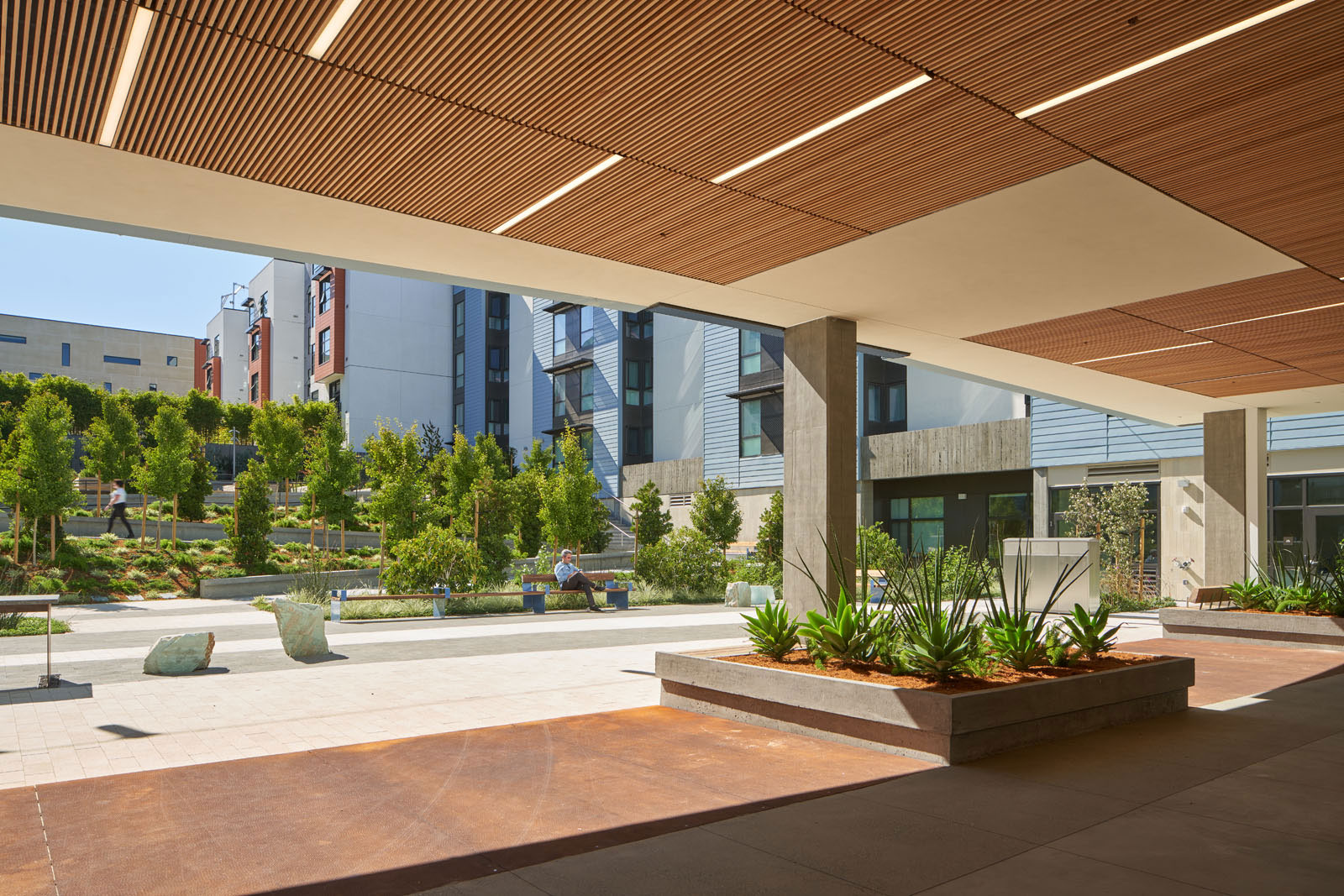
The central courtyard and communal garden at the Edwin M. Lee Apartments brings much-needed green space to its residents. Photo by Bruce Damonte
To address the lack of natural spaces in many urban environments, multifamily development projects are turning to the inclusion of green spaces and biophilic design elements to provide their tenants with a greater connection to the natural world. “Many multifamily buildings have continued to put a stronger emphasis on additional green space through features like walking trails, outdoor fire pits, courtyards, and rooftop terraces,” writes Schohan.
Landscaped courtyards and green roofs, for example, provide spaces for residents to interact and relax while also reducing feelings of stress and anxiety. Green spaces like these also act as natural insulation layers, help reduce temperatures through evaporative cooling, and even reduce the risk of urban flooding by limiting the flow of stormwater runoff.
In areas where adding green space simply isn’t feasible, multifamily design projects can still connect residents with the outdoors through the inclusion of other biophilic elements that either directly or indirectly invoke the natural world. Biophilic design can be implemented subtly through the use of exposed natural materials like wood and stone, inclusion of nature imagery, and integration of organic patterns and geometries. Biophilia can also be implemented overtly by incorporating greenery and vegetation throughout the interior, adding water features, and through the use of natural ventilation.
5 Multifamily Design Examples
Here are a few real world examples of successful multifamily development projects.
1. Edwin M. Lee Apartments, San Francisco
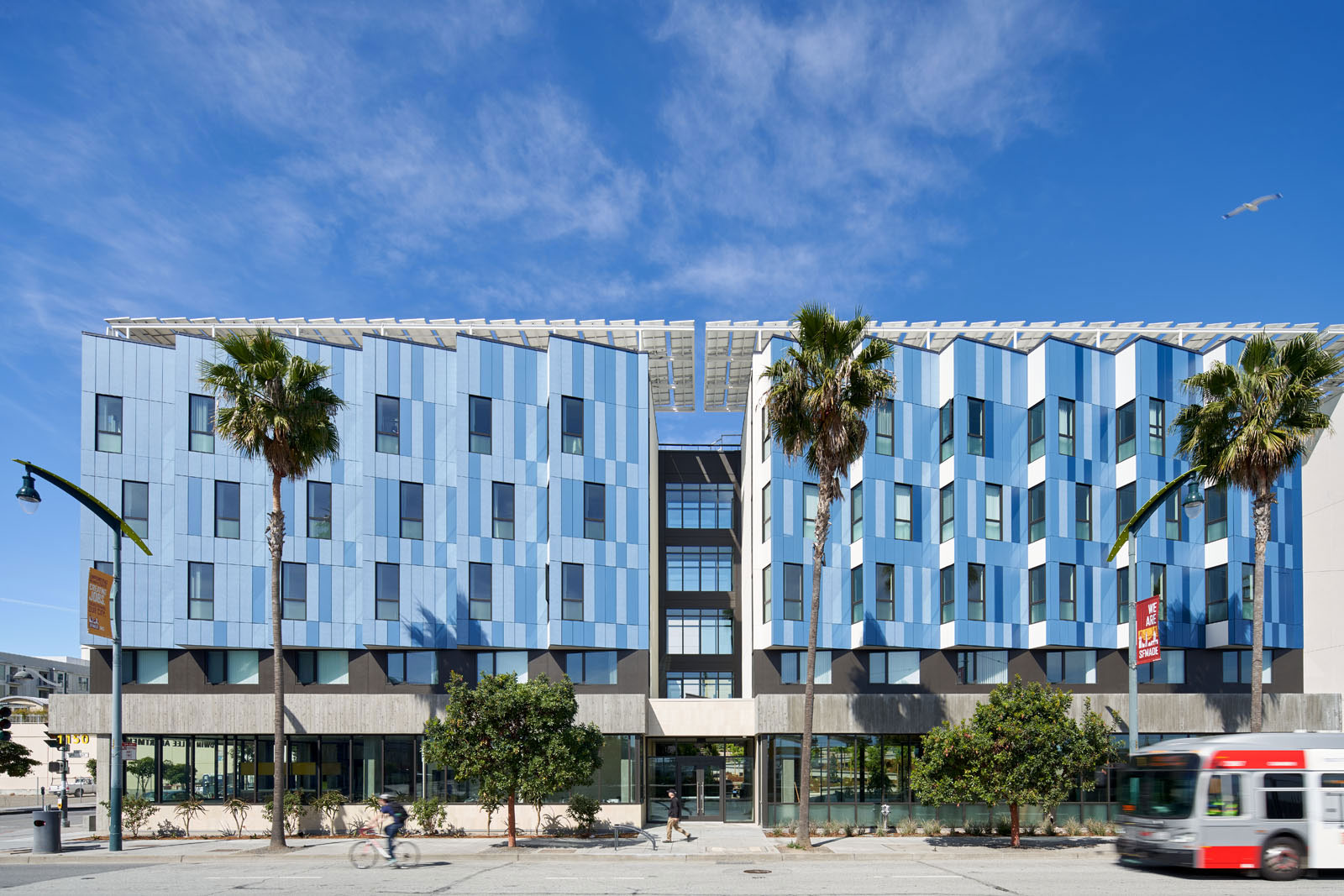
Edwin M. Lee Apartments is a multifamily housing project in San Francisco designed to provide homeless veterans and low-income families with high-quality affordable housing. Photo by Bruce Damonte
Designed by Leddy Maytum Stacy Architects (LMSA), the Edwin M. Lee Apartments (EMLA) is the first combined homeless veteran and low-income family development in San Francisco. Located in the post-industrial Mission Bay neighborhood, the residential complex is operated by nonprofits Chinatown Community Development Center and Swords to Plowshares; EMLA provides 62 apartments for formerly homeless veterans and 47 apartments for households earning between 50% and 60% AMI.
The building’s ground floor is multi-use and provides services for residents, neighbors, and the greater community at large. These shared amenities include a computer lab, onsite resident services, laundry facilities, separate community rooms for kids and teens, a large community room and kitchen, central courtyard, and communal garden.
To address the needs of both veterans and families the EMLA complex prioritized trauma-informed design and universal design principles. This can be seen especially in the central multi-layered courtyard, which contains a pet and service-animal relief area, semi-private seating options, a ball wall for kids, extra-wide sloped paths, and allows for both passive and active programming opportunities.
“The Edwin M. Lee Apartments has set a new standard for community-forward, equitable design,” Gwen Fuertes, architect and building scientist for LMSA, wrote in a previous gb&d article. “The integrated design creates a healthy, energy-efficient, resilient, and regenerative complex that provides social, economic, and environmental value to the residents and the greater community.”
2. DADA Distrikt, Brno, Czech Republic

The DADA Distrikt is an affordable multifamily housing project in the Czech Republic that resides in a former industrial storage facility. Photo by Kubicek Studio
Completed in 2020 the KOGAA-designed DADA Distrikt in the Czech Republic is an inspiring example of both sustainable multifamily housing and adaptive reuse in action. Originally built to serve as an industrial storage facility, the DADA Distrikt now functions as a mixed-use apartment complex, created in response to the country’s affordable housing crisis.
“The local market lacks affordable housing and therefore calls for alternative development solutions that would also be able to strengthen the quality of public spaces,” Alexandra Georgescu, a cofounder of KOGAA, previously told gb&d. “Its relatively economical reconstruction was made possible through shared funding and direct sales, therefore avoiding additional investment returns to developers and fees to real estate agencies.”
The four-story multifamily building now houses 10 loft-style apartments, commercial office spaces, and a green roof/garden where residents regularly organize film screenings, barbecues, owners’ meetings, and other events. Each apartment also has its own raised bed on the rooftop garden, allowing residents to grow herbs, small vegetables and fruit.
In addition to being a shared communal space, the rooftop garden also helps manage stormwater runoff, reduces the risk of flooding, provides cooling in the summer and encourages the reintroduction of biodiversity into an environment otherwise damaged by industrial pollution. Greywater is collected and reused throughout the building for its internal and external functions, including in washrooms and for irrigation purposes.
3. Casa Adelante, San Francisco
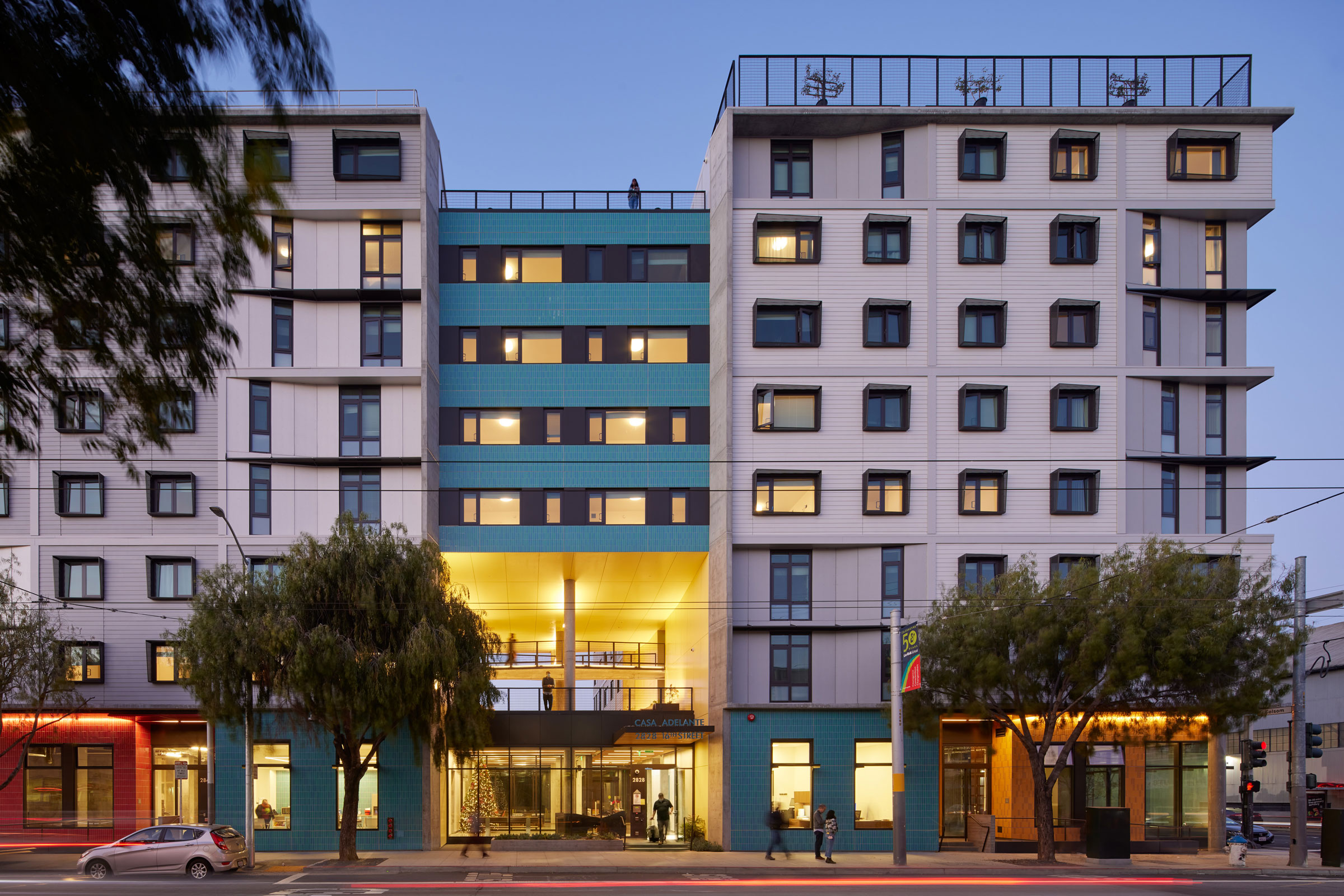
Leddy Maytum Stacy Architects worked with Mission Economic Development Agency and the Tenderloin Neighborhood Development Corporation to foster and celebrate an interconnected and vibrant community as part of the Casa Adelante multifamily residential project. Photo by Bruce Damonte
In San Francisco’s historic Mission District—an area populated primarily by families of Lain American descent—the Casa Adelante 2828 16th Street multifamily housing project showcases how affordable housing can help uplift cultural and environmental sustainability.
Also designed by LMSA, Casa Adelante employs multi-use planning, encompassing 143 apartment units as well as an art gallery, community room, child care center, and a youth empowerment organization. All of these ground floor services and amenities are interconnected to facilitate movement, interaction, and relationship-building, while also allowing for easy transitioning into event space when necessary.
Casa Adelante’s main entryway is framed by a large, two-story portal that faces out into the surrounding neighborhood, accented by colorful tiles and a mural. Windows that look towards 16th Street are capped by dynamically-shaped sunshades to help prevent excessive heat gain. “The main long facade faces south, so we wanted to be sure to shade the windows as the sun moves throughout the day,” Ryan Jang, principal at LMSA, told gb&d in a previous article. “They extend a little bit further both on top and toward the west on the vertical side to reduce heat gain into the windows and into the units.”
Residents of Casa Adelante also have the opportunity to grow their own food, as both the seventh floor and roof are dedicated to urban agriculture and food production. A rooftop photovoltaic solar array and solar hot water ray allow the building to produce a portion of its own energy, too.
“It’s really about fighting displacement within another predominantly Latin American community,” Jang says. “It’s about what we with MEDA (Mission Economic Development Agency), our client, call cultural resilience and cultural preservation, fighting against gentrification and displacement so families can find a way to live affordably within the neighborhoods and community they’ve been a part of for a long time.”
4. Sibley Square, Rochester, NY
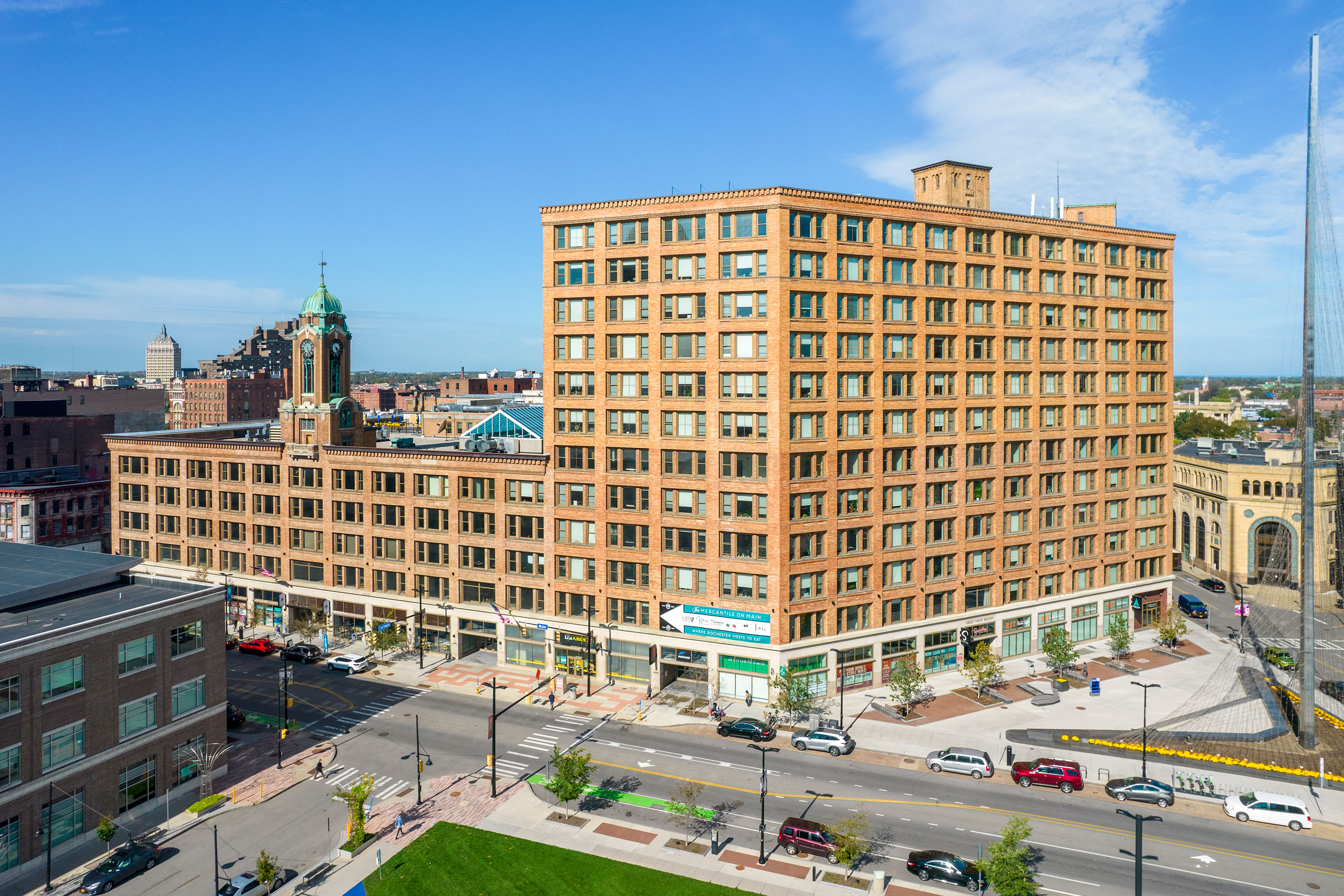
Designed by TAT for developer WinnDevelopment, Sibley Square in Rochester is now a thriving multi-use multifamily residential community. Photo by Christian Scully
Designed by TAT, Sibley Square resides in the former Sibley’s Department Store—built in 1909—and occupies 1.1 million square feet. This mixed-use development encompasses nearly 200 mixed-rate and affordable housing units, retail shops, restaurants, a child-care facility, a grocery store, offices, and even an art gallery—effectively making the structure a walkable, multi-story neighborhood.
Because the structure was originally built in the early 1900s at a time when pedestrian infrastructure was the norm and the automobile still considered a frivolous luxury, the Sibley Square multifamily complex was already served by multiple public transit options and within walking distance of several parks, further reducing the need for private vehicles and making for a much healthier, safer living environment. These qualities, along with the fact that all appliances and lighting within the building are Energy Star-labeled, helped Sibley Square earn LEED certification.
“Our towns and cities face persistent challenges, but it truly is possible to use existing assets to meet many of our most pressing social needs,” Michael Albert, a project manager at TAT, previously told gb&d. “For us Sibley Square is a reminder to always think creatively and take the perspective that solutions are possible when people collaborate.”
5. Florence Mills Apartments, Los Angeles
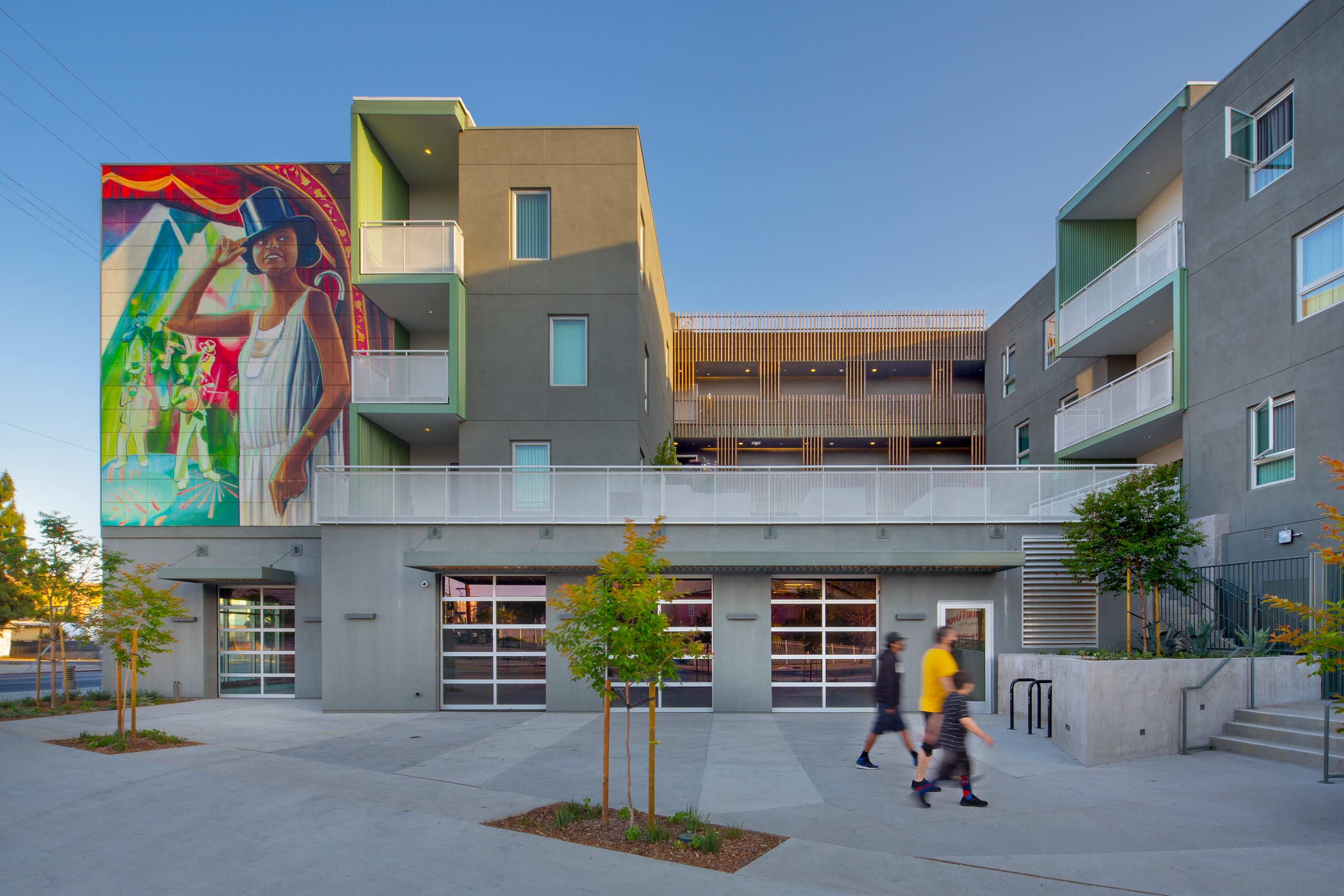
Florence Mills Apartments is an inspiring example of multifamily design that caters to low-income households and centers community above all. Photo by Jim Simmons Photography
Developed by the Hollywood Community Housing Corporation and designed by KFA, the Florence Mills Apartments complex was always intended to be a different kind of housing project. “From the beginning we sought for the building to be open, engaging, and optimistic,” John Arnold, partner at KFA, previously told gb&d. Careful planning ensured every aspect of the building—from the orientation to the balconies, fenestration, and corridors—was designed to embrace the community rather than isolate or close residents off from it.
The most captivating aspect of the apartment building is its large, colorful murals—of whose design the community had 100% control over. Long-term residents of the area chose local artist Myisha Arellano to paint the murals, both of which depict Florence Mills, the iconic Black vaudeville singer, dancer, and actress for whom the building is named.
To ensure that the apartments remain affordable and accessible, all 74-units are restricted to households at the low-, very low-, and extremely low-income levels, with rents set between $507 and $1,171 per month. The building itself is intentionally located within walking distance of shops, grocery stores, essential services, and public transit.
Florence Mills Apartments is not, however, just a residential space. The property also includes 5,000 square feet of commercial retail space leased to the Young Musicians Foundation, an organization that provides free music classes, workshops, concerts, a music technology and recording lab, and multi-disciplinary arts programming to FMA residents.

